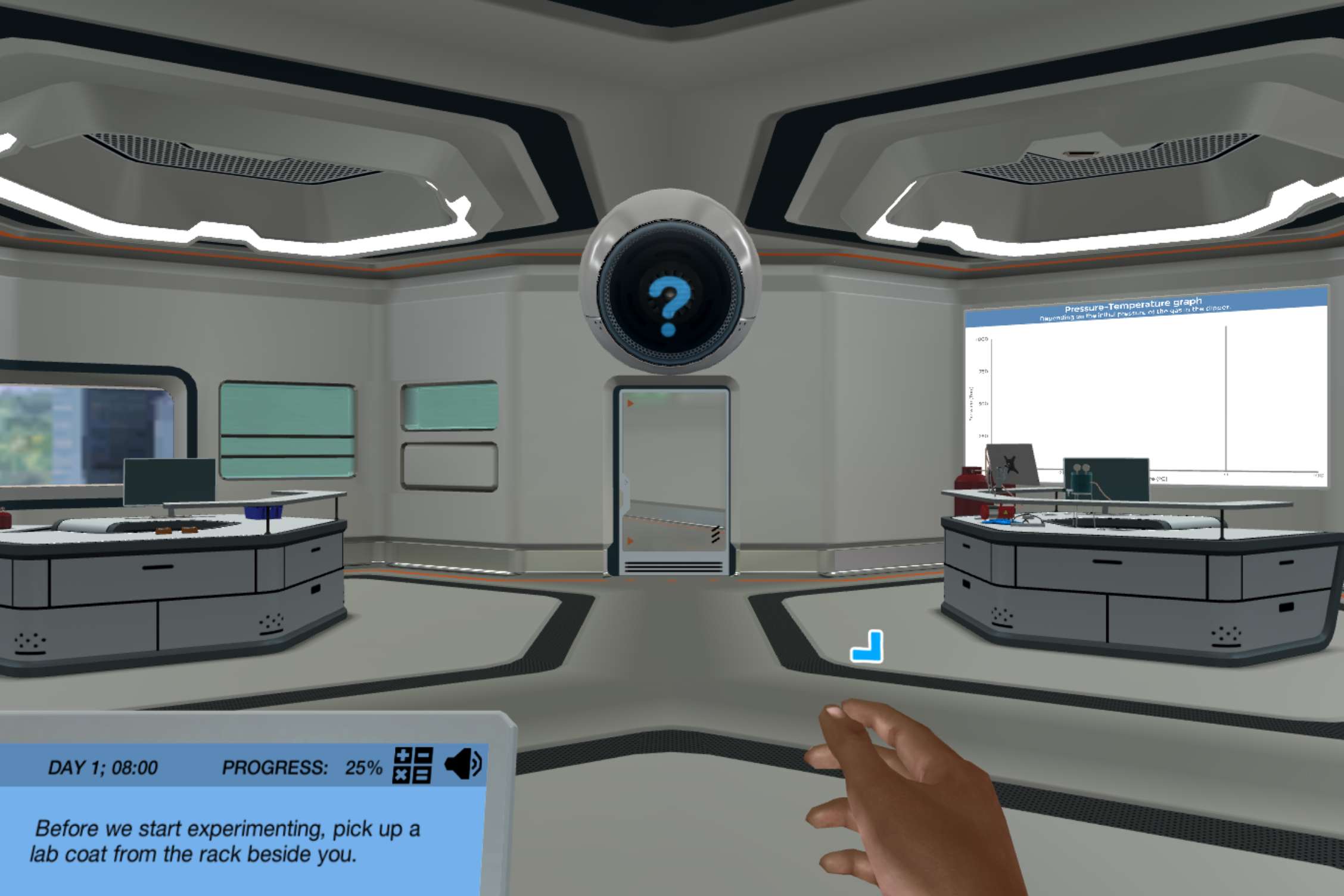Heading 1
Heading 2
Heading 3
Heading 4
Heading 5
Heading 6
Lorem ipsum dolor sit amet, consectetur adipiscing elit, sed do eiusmod tempor incididunt ut labore et dolore magna aliqua. Ut enim ad minim veniam, quis nostrud exercitation ullamco laboris nisi ut aliquip ex ea commodo consequat. Duis aute irure dolor in reprehenderit in voluptate velit esse cillum dolore eu fugiat nulla pariatur.
Block quote
Ordered list
- Item 1
- Item 2
- Item 3
Unordered list
- Item A
- Item B
- Item C
Bold text
Emphasis
Superscript
Subscript
About This Simulation
Observe the behavior of an ideal gas and the effects on this behavior when external variables are altered. Learn how the different variables affect the behavior and understand the relation of these variables to the ideal gas law equation.
Learning Objectives
- Define the relationship between pressure, volume and temperature in gases
- Relate the behavior of ideal gases to the ideal gas law equation.
About This Simulation
Lab Techniques
- Gas inlet
- Bunsen burner
- Ideal Gas Law
Related Standards
- No direct alignment
- Chemistry Unit 3.4 Ideal gas law
- Physics 2 Unit 2.2 Pressure, thermal Equilibrium, and the ideal gas law
- No direct alignment
Learn More About This Simulation
This short, targeted simulation is adapted from the full-length “Ideal Gas Law” simulation.
Are you interested in seeing virtual ideal gas molecules? In this simulation, you will observe how ideal gas molecules behave according to the Ideal Gas Law. You’ll learn about the relationship between pressure, volume and temperature in gases by adjusting these variables. Unlike in a normal lab, you’ll be able to observe a physical representation of the gas molecules!
Formulate the Ideal Gas Law
Imagine how easy it would be to understand the behavior of an ideal gas if the gas molecules were so big that they could be seen with the naked eye. Well, in this simulation they can! The gas molecules are magnified, so you can see what is otherwise invisible. Your next mission is to define the relationship between the pressure, temperature and volume of an ideal gas sealed in a glass jar.
Familiarize yourself with the ideal gas law equation
Take a deeper look into the makeup of the ideal gas law equation and how each variable is directly correlated with one another. Relate the effect of the variables from observing the virtual gas molecules in the jar to the ideal gas law equation to understand that it defines the exact behavior you have been observing.
Review your knowledge
Consolidate all of your knowledge gained from observing the ideal gas molecules by answering some questions and reading up on relevant theory through our informative theory pages linked in the simulation. Become introduced to a method that could be used in a lab to collect data and prove that this is in fact how ideal gases behave.
For Science Programs Providing a Learning Advantage
Boost STEM Pass Rates
Boost Learning with Fun
75% of students show high engagement and improved grades with Labster
Discover Simulations That Match Your Syllabus
Easily bolster your learning objectives with relevant, interactive content
Place Students in the Shoes of Real Scientists
Practice a lab procedure or visualize theory through narrative-driven scenarios


FAQs
Find answers to frequently asked questions.
Heading 1
Heading 2
Heading 3
Heading 4
Heading 5
Heading 6
Lorem ipsum dolor sit amet, consectetur adipiscing elit, sed do eiusmod tempor incididunt ut labore et dolore magna aliqua. Ut enim ad minim veniam, quis nostrud exercitation ullamco laboris nisi ut aliquip ex ea commodo consequat. Duis aute irure dolor in reprehenderit in voluptate velit esse cillum dolore eu fugiat nulla pariatur.
Block quote
Ordered list
- Item 1
- Item 2
- Item 3
Unordered list
- Item A
- Item B
- Item C
Bold text
Emphasis
Superscript
Subscript
A Labster virtual lab is an interactive, multimedia assignment that students access right from their computers. Many Labster virtual labs prepare students for success in college by introducing foundational knowledge using multimedia visualizations that make it easier to understand complex concepts. Other Labster virtual labs prepare learners for careers in STEM labs by giving them realistic practice on lab techniques and procedures.
Labster’s virtual lab simulations are created by scientists and designed to maximize engagement and interactivity. Unlike watching a video or reading a textbook, Labster virtual labs are interactive. To make progress, students must think critically and solve a real-world problem. We believe that learning by doing makes STEM stick.
Yes, Labster is compatible with all major LMS (Learning Management Systems) including Blackboard, Canvas, D2L, Moodle, and many others. Students can access Labster like any other assignment. If your institution does not choose an LMS integration, students will log into Labster’s Course Manager once they have an account created. Your institution will decide which is the best access method.
Labster is available for purchase by instructors, faculty, and administrators at education institutions. Purchasing our starter package, Labster Explorer, can be done using a credit card if you are located in the USA, Canada, or Mexico. If you are outside of North America or are choosing a higher plan, please speak with a Labster sales representative. Compare plans.
Labster supports a wide range of STEM courses at the high school, college, and university level across fields in biology, chemistry, physics, and health sciences. You can identify topics for your courses by searching our Content Catalog.















